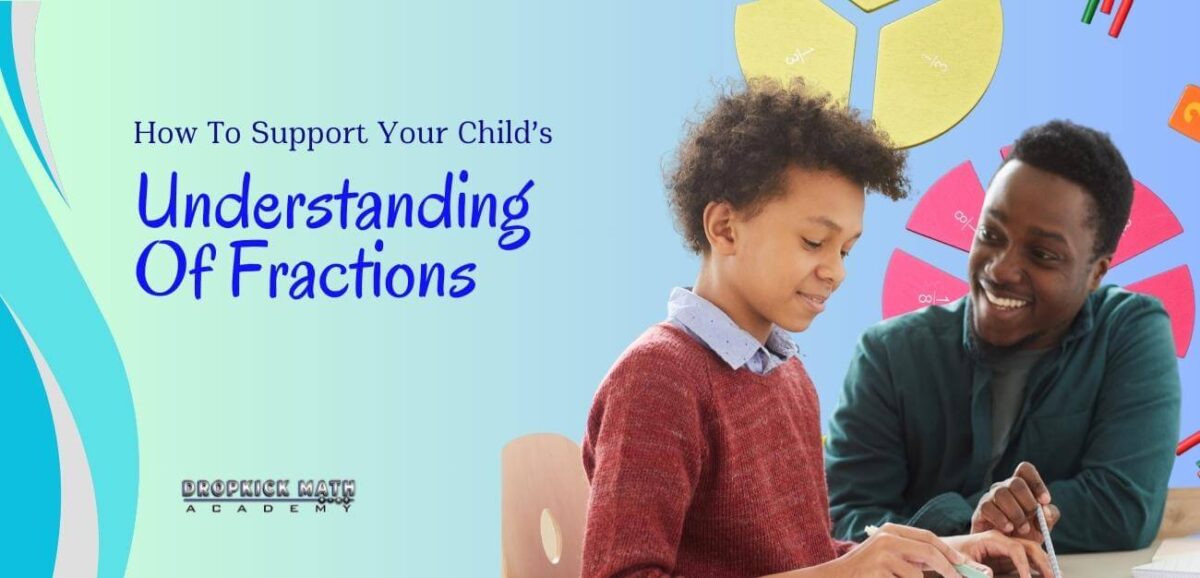Let’s face it, helping your child with fractions can feel like trying to untangle the world’s toughest knot. Does the phrase, “numerator over denominator” cause more shudders than the thought of a looming math exam? Fret not, dear parents. This isn’t just about learning mathematics. It’s about presenting a positive attitude, nurturing skills, and debunking the myth that fractions are the ‘tough guys’ of elementary school math.
Together, we’ll navigate the daunting world of numerators and denominators, explore beyond the overused ‘pizza model’ and build a solid foundation that will make your child’s math journey smoother and less intimidating. Buckle up, as we delve into the common pitfalls to avoid when helping children with math!
Understanding the Importance of a Positive Attitude in Fraction Teaching
Teaching and learning fractions can indeed be quite a challenge, yet your attitude as a parent can significantly impact your child’s learning experience. Instead of expressing frustration or disdain for math operations, let’s focus on fostering a positive approach.
It’s important to remember that your emotions can easily influence your child’s perspective. If you continuously exhibit a negative attitude toward teaching fractions, it is likely that your child will mirror this sentiment toward learning them. This could potentially hamper their progress, and we certainly don’t want that.
Putting a positive spin on fractions does not necessarily require you to pretend to love them if you don’t. It’s simply about framing them in a more constructive light. Emphasize on the practical application of fractions in everyday life, like when measuring ingredients for a recipe or dividing a stash of candies among friends.
Rather than dwelling on the toughness of the task, show enthusiasm for the learning process. When your child comes across challenges, frame it as an opportunity for growth and learning. Acknowledging their struggles while promoting perseverance will help in maintaining their motivation and confidence.
In sum, cultivating a positive attitude is not about making fractions seem like an effortless task. It’s about fostering resilience, enhancing motivation, and making learning enjoyable for your child.
Defining Numerators and Denominators: Building Blocks for Fraction Comprehension
Numerators and denominators, simply put, are the fundamental components of fractions. The numerator, the number on top, reveals how many parts we have. The denominator, the number beneath, discloses the total number of equal parts. These parts make the core of a fraction; therefore, it’s crucial for kids to understand their functions.
Some parents or tutors may have a tendency to rush in with the direct definitions. However, it’s more beneficial to explain the logic behind these terminologies. For instance, show them a divided piece of paper, and explain numerators and denominators in this real-world context. The children will likely grasp the idea better, making fractions less intimidating and more understandable.
Using manipulatives and interactive activities can also enhance the learning process. Remember, effective learning often occurs through understanding, not memorization. So, help them to relate the numerator and denominator to the physical components of the fractional representations.
Another essential aspect to comprehend is the relationship between the numerator and the denominator. It’s not just about understanding individual terms, but also how these elements function together. Drawing comparisons, sharing stories or analogies, or even using songs, can solidify understanding and create meaningful connections for young learners.
If at first they don’t succeed, try not to get frustrated. But stay calm, patient, and persistent. Every child has a unique learning curve, and it’s perfectly fine if they take a little more time to understand.
In conclusion, teaching numerators and denominators is not about rote learning, but about making the concept intuitive and relatable. Once this base is strong, your child will be better equipped to tackle the more complicated aspects of fractions and other math concepts down the line.
Beyond the Pizza: Innovative Approaches to Teach Fractions
Teaching fractions can often feel as though you’re stuck in a topping-heavy exercise of dividing a pizza. While an undoubtedly effective illustration, this math learning technique is commonly used in schools, and leans heavily on a child’s familiarity. As a helpful parent, you might want to shake things up a bit.
The “pizza model” is a technique of fraction education, owing to its simplicity. Children can easily envision a pizza being divided into smaller, equal parts. However, the sole use of this model may limit a child’s understanding of fractions. Here’s why: the pizza model is used so often, children might mistakenly think fractions only apply to circular objects or food items, rather than seeing them as a pervasive mathematical concept spanning numerous real-life scenarios.
It’s time to take the fraction teaching a notch up and introduce your kids to alternative methods. There is a myriad of other innovative approaches waiting to be explored.
Try using the ‘number line method’ where children can learn about fractions by placing them on a number line. This method visually represents fractions as parts of a whole number, which can help to solidify a child’s understanding.
Similarly, the ‘fraction bar method’ or the ‘pieces of a square’ approach can disrupt the monotony of pizza-cutting and simplify the process of explaining fractions. Here, you show fractions as parts of a bar or square, enabling your child to see fractions in a variety of shapes and contexts. It’s an excellent way to demonstrate fractions’ versatility and wide-ranging applicability.
Also, using real-life objects and examples can make learning fractions more fun and practical – dividing multi-coloured candies, or discussing the chances of rain from a weather forecast, can make fractions come alive!
Remember, the aim is to make your child comfortable with the concept of fractions, not just within the context of pizza slices, but in an array of real-world settings. These innovative methods might just transform your child’s relationship with fractions, making them feel more at ease with not just this, but other daunting math topics they may encounter. After all, fractions are simply another piece of the mathematical puzzle waiting to be solved!
A Shared Journey of Discovery
In conclusion, helping your child grasp the concept of fractions can certainly provide its share of challenges. However, We must not forget that this shared journey of discovery lays the bedrock for a lifelong love of learning. So, let’s strive to keep frustrations at bay and use effective strategies to teach fractions. Remember, we are not just defining numerators and denominators; we’re lighting a spark of curiosity in our little learners that will be fueled throughout their academic journey.
Let’s look beyond traditional means, such as the pizza model and try to bring creativity into the learning environment. In the end, our goal isn’t just to teach fractions—it’s about shaping critical thinkers, problem solvers, and innovators for the future. Let’s venture on, embracing every learning opportunity and avoiding the common teaching pitfalls!
For more resources about math learning techniques or how to help your child with their math homework, sign up for our eBulletin!




